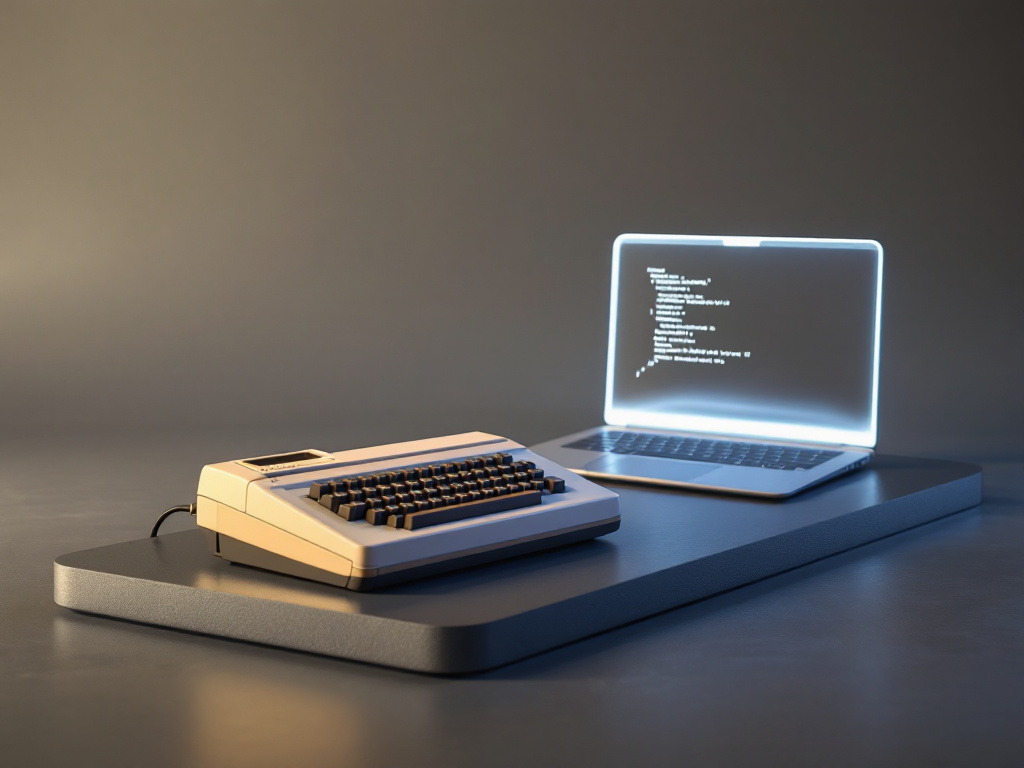Last weekend at LudiKastello in the Renaissance halls of Palazzo Vitelli a San Giacomo, visitors witnessed an extraordinary fusion of vintage and cutting-edge technology: a Commodore 64 from 1982 chatting live with ChatGPT. This ambitious experiment, orchestrated by RetroCampus and hosted by the “Peter Pan” gaming association, demonstrated how a classic 8-bit machine can complement today’s most advanced artificial intelligence.
A portal between eras: setting up the C64–ChatGPT link
To bring this vision to life, organizers tapped into the RetroCampus BBS server, a network housed by a Milanese retrocomputing collective. By routing Commodore 64 commands over a local IP connection, the venerable 64-column display morphed into a dynamic chat window. Enthusiasts typed questions on the iconic C64 membrane keyboard, and within seconds, responses from ChatGPT appeared in scrolling videotext style, complete with simulated block graphics.
Hands-on AI in 8-bit style
- Real-time Q&A: Attendees asked anything from simple math problems to trivia about gaming history, validating that ChatGPT’s model adapts even to a retro interface.
- Web integration: The same interface fetched live Wikipedia articles, news headlines, and weather forecasts, proving the setup’s versatility outside pure AI chat.
- Authenticity preserved: While the Commodore 64’s BASIC prompt guided interactions, no modern devices were visible on stage—just the glowing amber dots of a classic video output.
Fabio Antimi, one of the event’s coordinators, summed up the crowd’s enthusiasm: “We never imagined that a 40-year-old computer would converse fluently with today’s most sophisticated AI. It’s both nostalgic and mind-blowing.”
Educational impact and community spirit
The “Peter Pan” association emphasized how this cross-generational project sparks curiosity in children and rekindles passion among veteran coders. Visitors ranged from families with tech-savvy kids to longtime C64 hobbyists eager to test the boundaries of their favorite vintage machine.
- Bridging generations: Younger attendees saw firsthand that early personal computers can still solve modern problems, motivating them to learn computing fundamentals.
- Preserving digital heritage: By integrating a Commodore 64 into a live AI demo, organizers highlighted the importance of maintaining historical hardware and software ecosystems.
- Hands-on workshops: In parallel rooms, experts guided participants through BASIC coding exercises, circuit repairs, and constructing new cartridges—completing the retrocomputing experience.
The Commodore 64’s enduring legacy
First released in 1982, the Commodore 64 sold over 17 million units worldwide, cementing its status as the most popular home computer in history. Its simple yet versatile MOS Technology 6510 processor, 64 KB of RAM, and robust SID sound chip seeded an entire generation of developers and gamers.
- Hobbyist haven: Enthusiasts still build new projects, from FPGA recreations to hardware expansions like Ethernet adapters and even modern displays.
- Creative catalyst: Legendary game developers first honed their craft on this platform, inspiring today’s indie and commercial creators.
- DIY culture: The C64’s openness encouraged community-driven modifications, fueling decades of magazine cover-disks, user groups, and code sharing.
Beyond nostalgia: a blueprint for modern hacks
The success of the C64–ChatGPT pairing at LudiKastello underscores a broader trend: blending legacy hardware with contemporary cloud services. While big-screen museum installations and museum curation are goals, hands-on events prove that anyone can repurpose old tech as part of real-world solutions.
- IoT gateways: Antique computers often connect to modern sensors or control networks, creating low-cost automation prototypes.
- Educational platforms: Schools repurpose early home computers to teach programming basics without expensive new equipment.
- Artistic experiments: Audio artists sample chip-tune sound engines alongside AI-generated music for multimedia installations.
Looking ahead: where retro meets AI next?
Encouraged by the LudiKastello showcase, RetroCampus plans to extend the concept. Future demos may link a Spectrum or Amiga to generative AIs, or explore on-device AI in microcontrollers like the Arduino. The goal remains the same: celebrate the technological past while forging new creative and educational pathways.
For now, the Commodore 64’s conversation with ChatGPT stands as a testament to enduring innovation. It reminds us that the bridge between past and future can be built with resourcefulness, community passion, and a dash of nostalgia.

Renters work 125 days a year just to pay rent
Construction firm insolvencies hit new record as costs soar
Lights, camera, taxes: British film industry rattled by Trump’s tariff threat
US dollar supremacy is slowly eroding, investors warn




